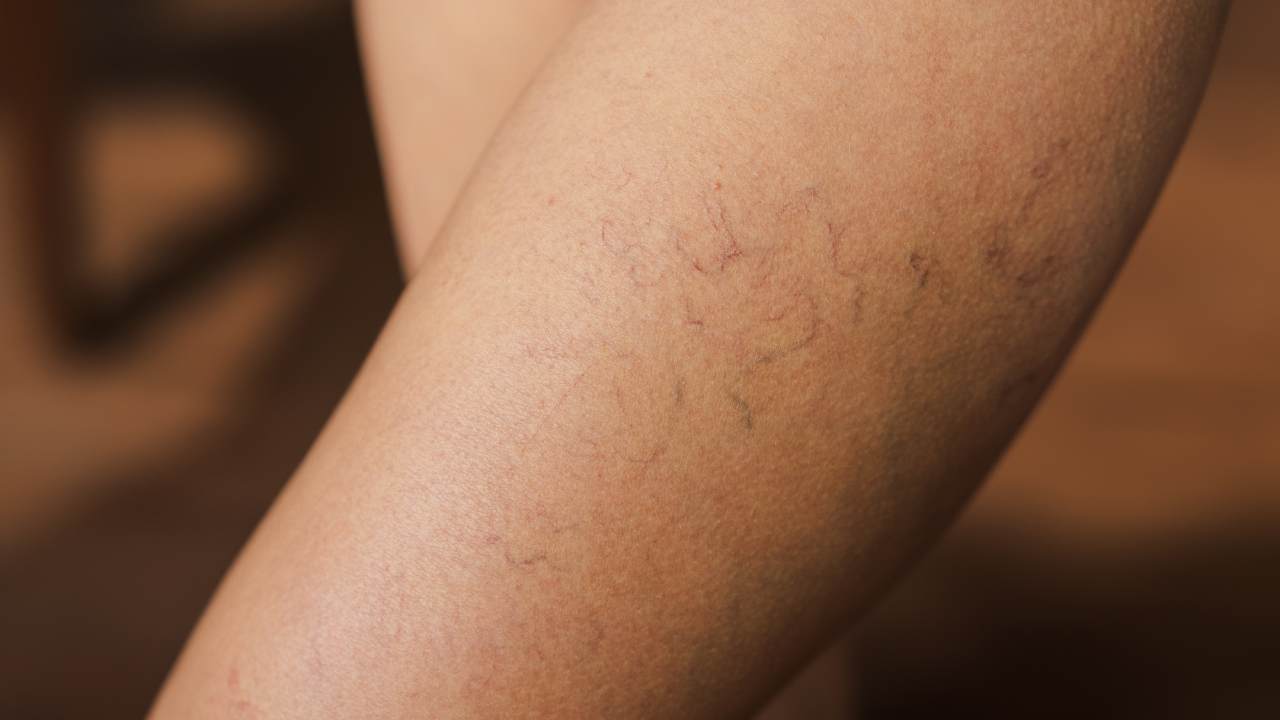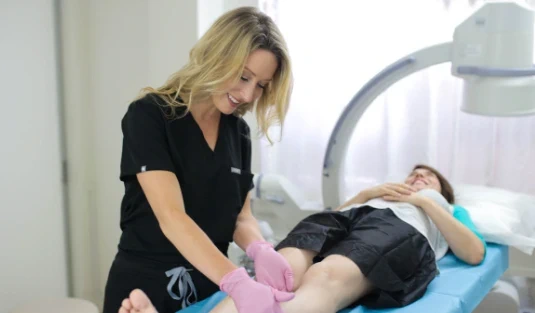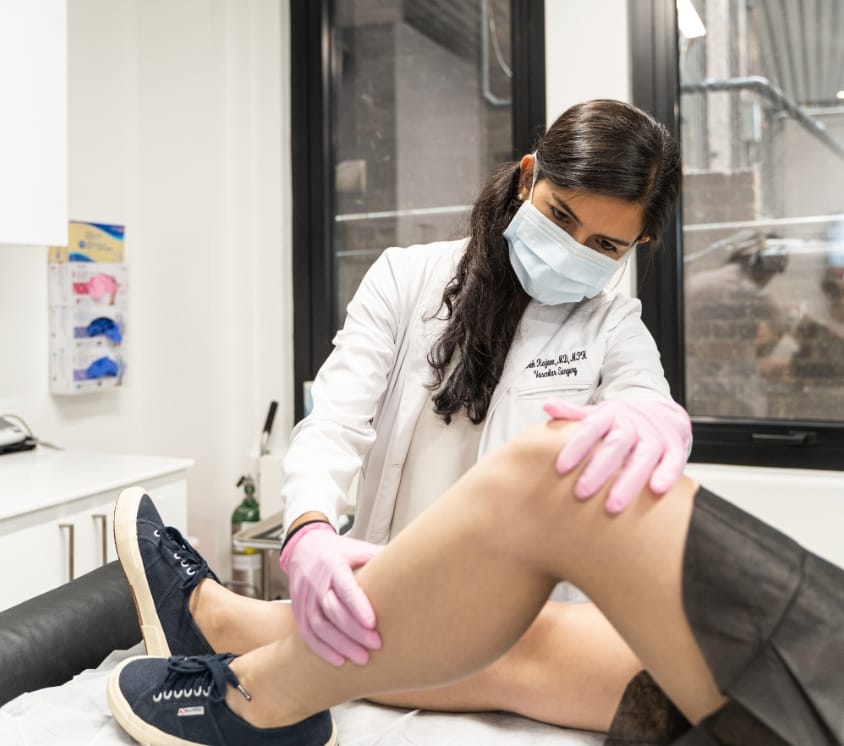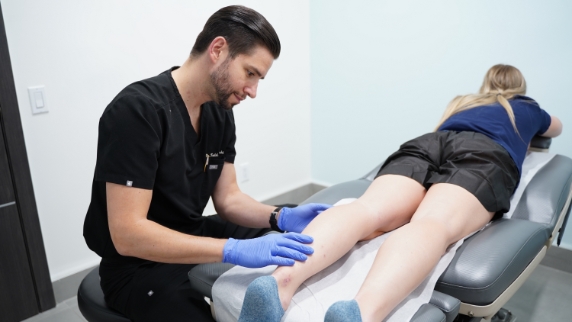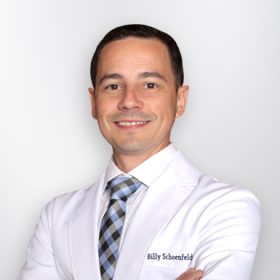You’ve just noticed a few tiny, web-like veins starting to form on your legs. At first, they were barely visible, but now they seem to be spreading. Perhaps your legs feel heavy at the end of the day, or maybe you’re simply bothered by the appearance of these spider veins or varicose veins. Spider veins are a common condition that many people face, especially as they age.
At Vein Treatment Clinic, we understand that spider veins can be both a cosmetic concern and a sign of underlying health issues. Whether you’re looking for information on what causes spider veins, seeking effective spider vein treatments, or trying to prevent them from worsening, this article will guide you through everything you need to know.
What Are Spider Veins?
Spider veins on legs, medically known as telangiectasias, are small, dilated blood vessels that appear close to the surface of the skin. They resemble spider webs or tree branches, which is how they got their name. These veins are usually red, blue, or purple and most commonly appear on the legs, though they can also develop on other parts of the body, including the face.
Spider veins form when the tiny valves inside your veins weaken or become damaged. Under normal circumstances, these valves ensure that blood flows in one direction towards the heart. However, when the valves don’t function properly, blood can pool in the veins, causing them to enlarge and become visible under the skin. While spider veins are typically harmless, they can sometimes be a sign of chronic venous insufficiency (CVI), a condition where the veins have difficulty sending blood back to the heart.
What Causes Spider Veins?
Understanding what causes spider veins can help you take preventive measures and seek appropriate treatment if necessary. Chronic venous insufficiency (CVI) is the most common root cause of spider veins. CVI occurs when the valves in the veins are unable to push blood back to the heart, causing blood to pool in the lower extremities. Over time, this increased pressure can cause veins to bulge and become visible as spider veins. If left untreated, CVI can lead to more severe conditions, including varicose veins, leg swelling, and even venous ulcers.
Beyond CVI, these are the most common risk factors for spider veins:
- Genetics: If your parents or grandparents had spider veins, you’re more likely to develop them as well. Genetics influence the strength and function of your vein walls and valves. If you inherit weak or dysfunctional valves, you’re at a higher risk for developing spider veins.
- Hormonal Changes: Hormonal fluctuations are another major cause of spider veins, particularly in women. Pregnancy and menopause can alter hormone levels, weakening vein walls and valves. During pregnancy, the increased blood volume and pressure on the veins from the growing uterus also contribute to the formation of spider veins.
- Prolonged Sitting or Standing: If your job or lifestyle requires you to sit or stand for extended periods, you might be at an increased risk of developing spider veins. Staying in one position for too long can impede blood flow, causing blood to pool in your legs. Over time, this can lead to the formation of spider veins and other venous conditions.
- Age: As you age, your veins naturally lose elasticity, and the valves inside them weaken, making it harder for blood to flow effectively. This can lead to increased pressure in the veins and the development of spider veins. Aging also slows down the body’s natural healing processes, making it more difficult for damaged veins to repair themselves.
- Obesity: Carrying excess weight puts additional pressure on your veins, particularly those in your legs. This can weaken the valves, leading to blood pooling and the formation of spider veins. Maintaining a healthy weight can reduce your risk of developing this condition.
- Sun Exposure: While spider veins are more commonly associated with the legs, they can also appear on your face due to excessive sun exposure. UV rays can damage the skin and blood vessels, causing them to enlarge and become visible.
What Are the Best Spider Vein Treatments?
If you’re already dealing with spider veins, several treatment options can help reduce their appearance and address any underlying venous insufficiency. At Vein Treatment Clinic, we offer a variety of minimally invasive treatments performed by our expert vein doctors.
Sclerotherapy
Sclerotherapy is one of the most effective and commonly used treatments for spider veins. During this process, a vein doctor injects a special solution directly into the affected veins, causing them to collapse and eventually be absorbed by the body. Over time, the treated veins fade, leaving your skin looking clearer. Sclerotherapy is minimally invasive, requires no anesthesia, and has a quick recovery time, making it excellent for most patients.
Ambulatory Phlebectomy
Ambulatory phlebectomy is another minimally invasive treatment, typically used for larger varicose veins and reticular veins that can’t be treated with sclerotherapy. This process involves making tiny incisions through which the vein is removed. Because the incisions are so small, stitches are usually not necessary, and scarring is minimal. This varicose vein treatment can be done in an outpatient setting, and patients typically experience a quick recovery.
VenaSeal
VenaSeal is a state-of-the-art treatment that uses a medical adhesive to close off problematic veins. A vein doctor uses a catheter to deliver the adhesive into the vein, sealing it shut. Blood is then rerouted to healthier veins, and the treated vein is absorbed by the body. VenaSeal is a relatively new treatment that offers a quick recovery time and minimal discomfort.
Radiofrequency Ablation
Radiofrequency ablation (RFA) is a technique that uses heat to close off affected veins. A catheter is inserted into the vein, and radiofrequency energy is delivered to heat the vein walls, causing them to collapse. The vein is then absorbed by the body, and blood flow is rerouted to healthier veins. RFA is an effective treatment for underlying venous insufficiency.
Endovenous Laser Ablation
Endovenous laser ablation (EVLA) is similar to radiofrequency ablation but uses laser energy instead of radiofrequency. A vein doctor inserts a laser fiber into the vein, and the laser’s heat causes the vein to close and eventually be absorbed by the body. Like RFA, EVLA is minimally invasive, requires only local anesthesia, and offers a quick recovery time.
How to Prevent Spider Veins
While there’s no definitive way to prevent spider veins entirely, there are steps you can take to reduce your risk. Here are some practical tips:
- Stay Active: Regular exercise improves circulation, helping prevent blood from pooling in your legs. Walking, swimming, and cycling are particularly beneficial for vein health.
- Elevate Your Legs: When resting, try to elevate your legs above heart level to encourage blood flow back to the heart and reduce the pressure on your veins.
- Wear Compression Stockings: Compression stockings provide gentle pressure to your legs, improving blood flow and reducing the risk of developing spider veins.
- Maintain a Healthy Weight: Excess weight puts extra pressure on your veins, so keeping your weight in check can reduce your risk of spider veins.
- Limit Sun Exposure: Protect your skin and veins by wearing sunscreen and avoiding excessive sun exposure, especially on your face.
- Avoid Prolonged Sitting or Standing: If your job requires you to sit or stand for long periods, take breaks to move around and stretch your legs.
At varicose vein treatment, we understand that dealing with spider veins can be frustrating, but effective spider vein treatments are available. Our board-certified vein doctors specialize in diagnosing and treating spider veins and their underlying causes, often covered by medical insurance if deemed medically necessary. If you’re concerned about spider veins, contact us to schedule a consultation or request insurance verification to explore your options.








